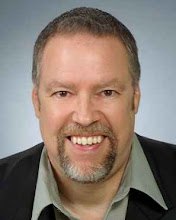Ten Steps to a Learning Organizaiton/ Steps 6-10 Summary/J. Colannino
In 2007 I wrote a summary of Kline and Saunders "Ten Steps to a Learning Organization," Steps 2-5. In the meantime, I had already submitted my Master's Thesis and graduated with and M.S. in Knowledge Management. However, recently Tori left a comment and asked if I would complete the series. Well, then... okay.
I have always said that the glory is not in the dreaming but in the doing. The dreaming is necessary, of course, but not sufficient. Steps 6 - 10 are about the doing. The authors begin:
"Imagine an organization in which everyone from top to bottom is either actually or potentially learning for the improvement of the organization.... Just in Time learning has become standard." "Who wouldn't want a learning organization? The answer is: all of us. [O]ne way or another we all tend to undermine the prospects for a Learning Organization."
With that surprising revelation, Kline and Saunders go on to argue that our misapprehension of learning as a scarce commodity is the root problem that keeps us from enabling the learning organization. Learning is not a scarce commodity. People are capable of unlimited learning, and talent is a resource in everyone. "We could learn all the time, if we were not prevented by one [of three] barriers[:]"
- the logical barrier -- missing explanations derail our understanding or else we fail to see the relevance of new information and we quit trying to understand.
- the ethical barrier -- if one feels an "important principle" is being violated, one's ability to learn is compromised.
- the feeling barrier -- we fail to learn because we fear our new knowledge
Notwithstanding, while I do not agree with the authors in absolute, I do think they are on to something. Learning capacity may not be infinite, but it is much larger than many give it credit for. And there is great joy in learning for many, if not all. Learning is empowering. So things like workplace training, tuition reimbursement, encouraging and rewarding personal mastery, etc. can be effective -- or not. If the focus is training, the program is likely to be ineffective. If the focus is learning then results are much better. That is, the outcome, not the process, is the important thing. Because people are different, one size does not fit all.
The theory of multiple intelligences states that there are different varieties of intelligence and they vary with each person. The seven major groups are
- Linguistic: sensitivity to meaning and syntax
- Logical/Mathematical: fluency with symbolics and logic
- Visual/Spatial: perception in 3D
- Kinesthetic: preference for hands on learning
- Musical: recognition of rhythm, melody, and harmony
- Interpersonal: ability to sympathize, empathize, and communicate
- Intrapersonal: ability to reflect and contemplate
Step 7 is to "map out the vision." That is, the big picture must be articulated, genuinely believed, and shared by the bulk of the organization including top management: they must walk the walk, not just talk the talk. Although incentives should be aligned, when push comes to shove, self-interest that is not aligned with organizational goals is likened to "organizational cancer" -- a part of the organization growing or operating uncontrollably at the expense of the whole. The cancer must be cured or removed.
Step 8 is "bring the vision to life." In particular, the organization must communicate in a way most can understand. The most neglected intelligence according to the chapter is kinesthetic. Many people learn by doing by physical involvement with the work. This is contrasted with traditional "book learning." Book learning has its place and is important, but should not be overemphasized to the point of impeding the growth of knowledge within a large section of the workforce.
Step 9 is "connect the systems." Here Kline and Saunders talk about techniques such as "mind mapping" and "kinesthetic modeling." But the basic idea is to get people to see the organization as a whole and understand how their learning and actions integrate with other parts of the body. This understanding will allow informal but powerful links to supplement and improve the dissemination of knowledge throughout the organization.
Step 10 is "get the show on the road." This, ultimately, is the act of getting on with things. No plan is ever perfect, and an organization must take its first steps despite that fact. In Step 10 Kline and Saunders describe activities that can help, such as a shared metaphor. Their preference is a dramatic metaphor whereby the employees (actors) all understand their roles and the importance of perfecting their craft. Managers are really directors, taking individual talents and focusing them in a harmonious way. Everyone understands that the show must go on.


0 Comments:
Post a Comment
<< Home